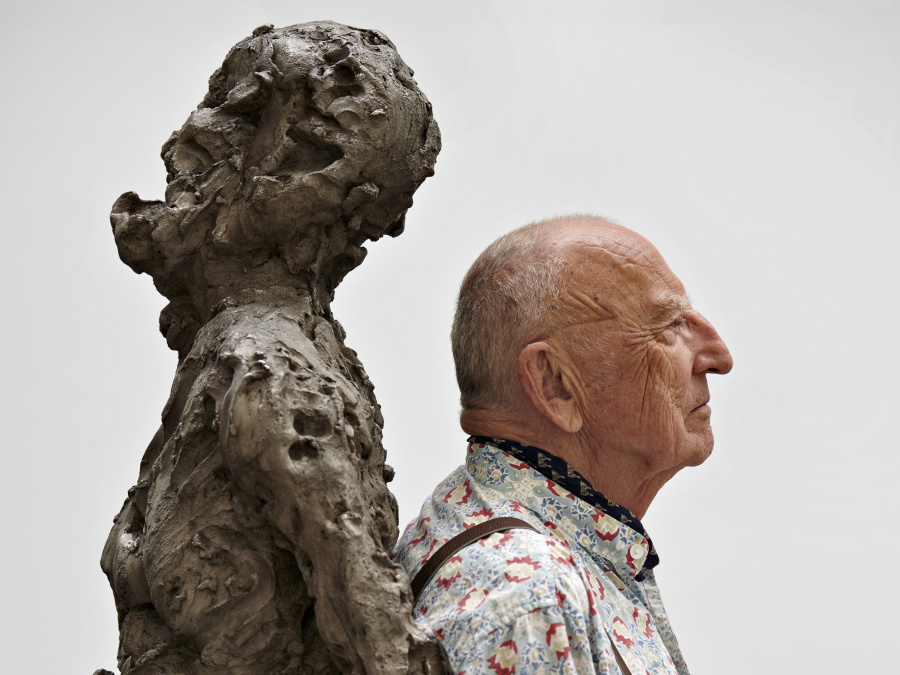Jørgen Haugen Sørensen (1934-2021) was one of Denmark's most esteemed and decorated sculptors. At the age of 15 he began a traineeship in pottery-making and two years later made his national debut at the prestigious Spring Exhibtion (“Forårsudstillingen”) at Charlottenborg.
Jørgen Haugen Sørensen’s artistic language has shifted and evolved throughout his career, but his production has always kept an abstract core within its diversity.
With his portfolio being dominated by various installations in bronze and clay throughout the 1960s, Haugen Sørensen made a transition into marble and granite in the 1970s, his style gradually shifting in colour scheme and format. As time went on his sculptures took on a darker and more cynical appearance, where the smoothness of the surface was brought to clash with a contemptuous and growling undertone.
The artist’s infamous stylistic expression encapsulates the cold and gloomy aspects of the human condition, where terms such as innocence and dignity are unknown.
Jørgen Haugen Sørensen exhibited widely in Denmark and abroad. He did countless commissions, redefined city spaces, squares and parks, erected enormous sculptures in capitals such as Seoul, Ankara and Rome, and decorated numerous official institutions - notably the Copenhagen Courthouse in 2013; a job that Thorvaldsen was initially given 200 years ago.
Sørensen exhibited with the KE (Kunstnernes Efterårsudstilling), as a member of Decemberisterne from 1956-75, and with Grønningen from 1978-88.
Jørgen Haugen Sørensen was awarded the Eckersberg Medal in 1969 and the Thorvaldsen Medal in 1979; the highest national honor a Danish artist can achieve.









































































